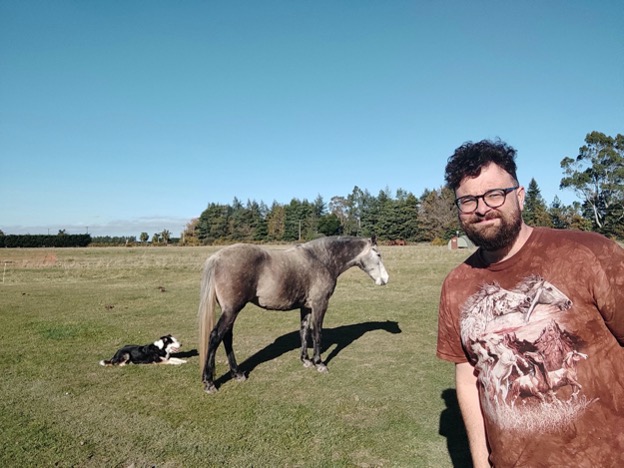Enzo caught up with Eyeliner during his daily commute, to talk to him about his new album – ‘brb’, his production techniques, and how he coped with lockdown in a new country… But also, to see if he could tempt him to wade into Vaporwave’s perpetual debate about sampling.
‘Eyeliner’ is the brainchild of Luke Rowell, who recently returned to New Zealand after a spell living in Hong Kong.
Not content with becoming a dad, switching continents, starting a new job and being inducted into the New Zealand National Library’s Archive… Eyeliner has managed to find time to work on new music; with an album – ‘brb’ – out this week on My Pet Flamingo.
The new LP features 13 new tracks and stunning artwork by mushbuh; the creative brains behind clothing/collectibles label – Item Label.
Eyeliner is no stranger to the Vaporwave scene, having released ‘High Fashion Mood Music’ back in 2012, and having worked with vapor-luminaries Beer on the Rug, Midwest Collective and Orange Milk Records.
As someone who’s been honing his craft for more than a decade in the scene, you’d think he’d be well placed to counter suggestions that ‘true’ Vaporwave needs to be sampled.
But first, I had to ask him about how the spectre of a global pandemic affected him personally and creatively.
“All I had over there (in Hong Kong) was time to myself. I moved countries right on the eve of the pandemic and spent two years, more-or-less, inside our apartment. I was freelancing with animation and I kept having jobs cancel on me – a lot of my income was producing visuals for live events.
“I also did a season of cartoon music for a kid’s TV show in New Zealand called The Vloggingtons and I did two big digital preservation projects with National Libraries NZ for two of my records, Eyeliner’s BUY NOW and Disasteradio’s Charisma – plus a remix album of BUY NOW with the material from the project.
“The new one came out a lot quicker and really isn’t built on older sketch ideas that I have saved up, it’s all new work that I wrote in HK. I definitely hermitted myself in, only really exploring outside in a very anonymous, observational fashion during Covid, and (as usual) expressing how that felt in the writing process helped me metabolize things.
“I also lost a few people dear to me at a time that I couldn’t return home because of travel restrictions, so there is a lot of self-reflection in (the album) about that.”
At the time of speaking he’s just about to have his first baby – now born, healthy and happy – with partner, Chloe, and moving back to New Zealand after a spell in Hong Kong has quite understandably come as something of an emotional relief.
“I moved from the most vertical city on earth to the flattest. Back to Aotearoa New Zealand, in farming country outside of Ōtautahi Christchurch.
“To have some personal space and outdoor space, and to finally see my family was a relief. We weren’t able to return home for two years because of the COVID quarantine lottery, so there is a kind of gag there with the title of the new album”.
‘brb’ – or Be Right Back’ is out this Saturday (11th November) at 5pm UK on My Pet Flamingo and he describes it as a “return to the snazziness of BUY NOW and the kind of fleeting ephemeral sense of LARP of Luxury”.

Drop Shadow was released in 2020, and Eyeliner has spent several years crafting the new album – making it something of a product of lockdown.
It’s an album that he wrote in Hong Kong, but which has recently been mixed and mastered in New Zealand; a process that has required working from memory – “from an impression I drew of Hong Kong”.
“The meaning of the record feels like it’s been crystallized and distilled via hindsight, which is sitting perfectly snug as part of the process.”
I ask him how that unique experience of living in a culturally distinct environment during a global pandemic affected the genesis of the album.
“Before I moved (there) I was making this music about luxuries, commerciality, whatever it is. But being embedded in the hyper metropolitan zones of HK made me loop back into those sensibilities in a very real way.
“Over there you see extremes of wealth and struggle. Both are very visible. What I came to value the most out there was this weird mix of anonymity plus a kind of embedded courtesy or care for each other that Hong Kongers seem to have. Like in the Subway nobody really cares who you are or what you’re doing, but nobody bumps into you.
“The streets are so busy but there was a real sense that everyone was looking out for each other, especially during COVID. I think it was also due to the atmosphere after the protests. I have a lot of adoration for those face-toface civic parts of big city life in HK. A real big-city vibe has made it into there, I think.
“Drop Shadow was more of a contemplative/cinematic and continuous album inspired by where I was at, at that time. But “brb” has been a bit more of a tilling back over, to rejuvenate those more original seeds of the albums previous to Drop Shadow… there is an ambient / psychedelic part which is a little dash of Drop Shadow too.”
From a conceptual point of view, it’s clear that ‘brb’ is a somewhat sarcastic jab at the COVID restrictions that stopped him and his partner from returning home for the best part of two years.
New Zealand’s quarantine system was via a “practically impossible lottery system” but with everything going on, he was happy to be ‘stuck’ in HK.
“I mostly did these urban hikes through Kowloon, to no particular place, and take the subway back home. Taking photographs of buildings and stopping at 7/11 for water and snacks.”
Details of the city, as experienced on these hikes, find their way into the album, as he explains:
“There’s a very architectural sense in a lot of the brass parts – which is a key sonic marker for the record; brass patches are all over it. With the brass there are a lot of staccato stabs, and for me that’s a reminder of the tall, thin rows of apartment blocks that are so common across all of HK.
“You can hear this in “Uptown Virtual”. If you look across either side of the harbour, there’s this kind of blocky timeline in the roof lines of all the skyscrapers. In my mind, there is a very evident formalism built into the record because of this.”

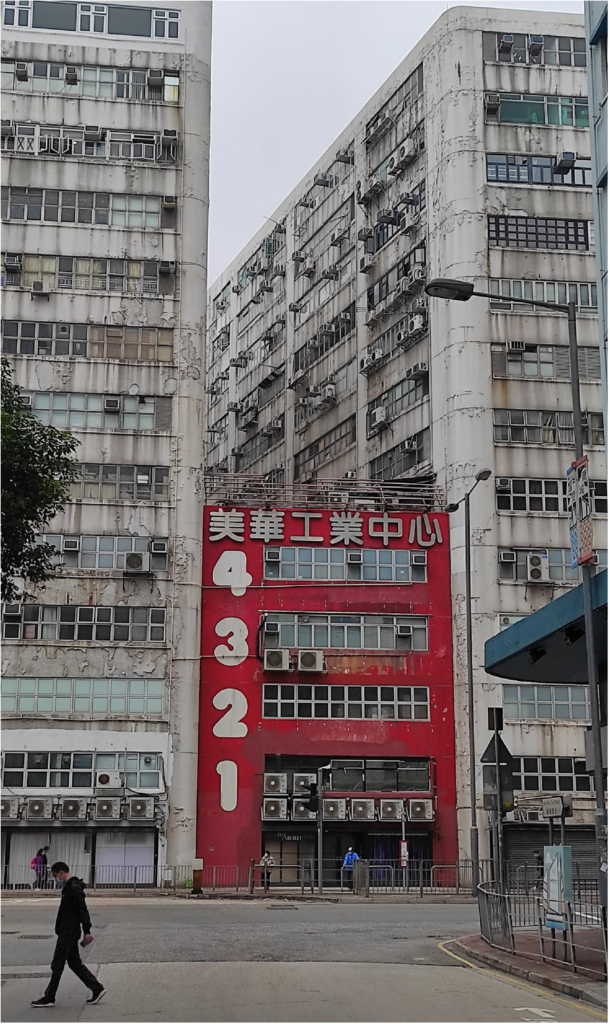
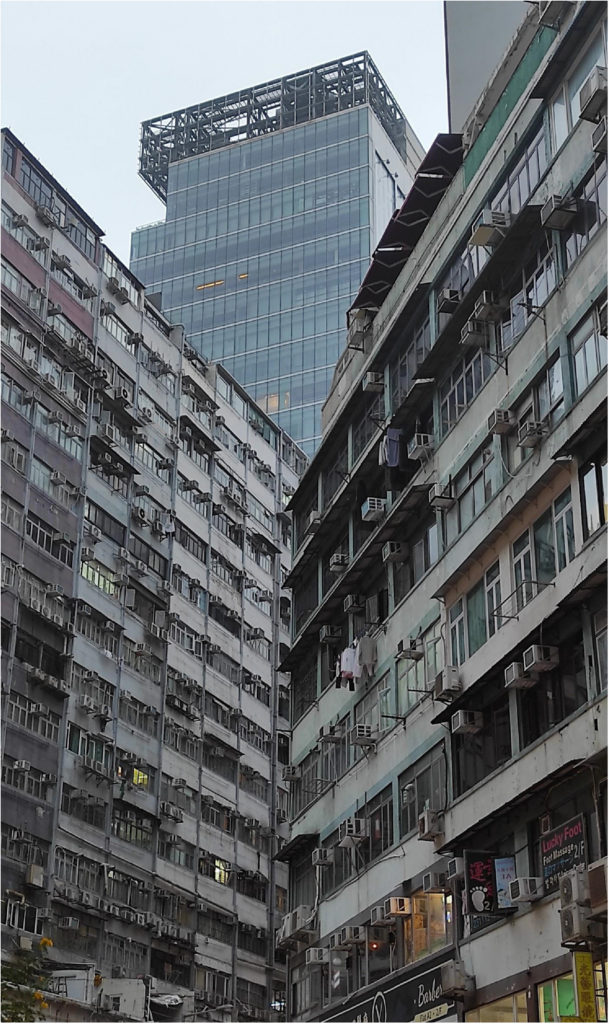
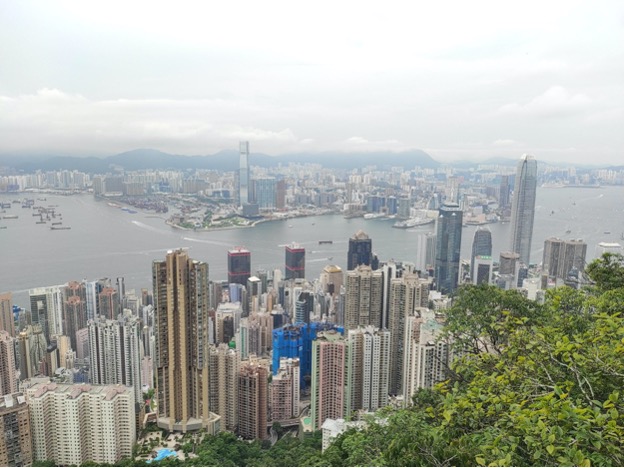
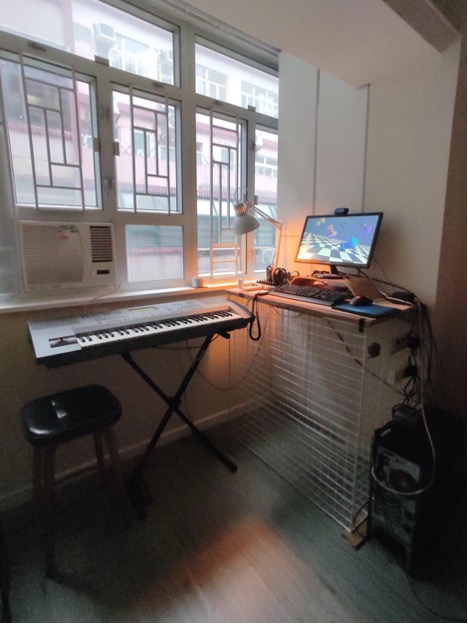
It doesn’t stop there. Every sonic second of this album appears to live and breathe the sights and sounds of Hong Kong.
“Music is folded in so neatly to city life in Hong Kong – there was also a lot of great in store music, at the supermarkets, in stores like Japan Home Centre and MUJI. Outside Kowloon’s independent gadget shops they would demo their battery powered speakers with a lot of great ’80s Cantopop and unhinged local pop dance stuff, which had the same hectic energy as hardstyle.
“The woolly sounds of those speakers combined with their flashing lights stuck with me, and I’ve tried to sit that idea into the album with a mellow, woolly midrange. There’s also a bit of love for Chinese New Year music; there’s a piece called “Good Evening” which mixes the sonics and harmonics of Chinese New Year music with elements of Chic.
“There was something in the back of my mind about British colonialism in HK, and what vestiges remain – I got hooked on a lot of ’80s British sophistipop over there. You know, Blow Monkeys, Sade, The Blue Nile, Style Council, that sort of thing. “Posh” stuff. Also, in the humid summer nights I listened to a lot of Haruomi Hosono’s album Tropical Dandy. His sensibilities and his twist on the musical language of exotica is super neat. I love him so much.”
It’s interesting to get his take on the perpetual debates around sampling in Vaporwave, not least because he’s been making it for the best part of a decade.
Unsurprisingly perhaps, given his production style, he gives short shrift to the notion that sample-free Vaporwave is any less valid than traditional approaches.
“Anyone making honorific judgements about a music not being sampled or not is playing a bad faith argument, we’re all dorks who have ruined our minds on the internet, all pointing at the same thing.”
It’s a fair point, and besides, I’ve yet to see anyone argue that Vaporwave NEEDS to move on from its roots in sampling. It’s a topic covered in detail by Thom from Donor Lens on this platform.
Surely there should be room for sample free productions if they lean into the same mood – or convey the same emotion and themes as traditional, ‘classic’ Vaporwave?
“I’m trying to make music which sounds like an artifact from another time and place. This play-acting/time travel thing I like to do with all my music projects is super fun. And I think a lot of Vaporwave producers – sampled or not – are trying to do this sort of thing. I feel like I can point at the same thing sampled Vaporwave artists are pointing at, but in my own way. Through accumulating points of reference, influences and techniques it could be argued that I’m still sampling.”
I put it to him that albums like James Ferraro’s ‘Far Side Virtual’ offer an alternative model for Vaporwave that is just a relevant to its progression as, say, ‘Floral Shoppe’.
“When I first heard the Computer Dreams record and early Ferraro – as well as Fatima Al Qadiri’s great GSX EP – I was hearing it all as a manifestation of what we called net art.
“It’s all the same thing to me. Personally, I like MIDI. In both process and concept I like being vague. And not being serious but being sincere.
“Far Side Virtual though, now there’s a very distinct and wonderful album still after ten plus years. It sounds simultaneously past and future, strophic and fleeting, child-like and violent, it’s so gorgeous. It’s a dark novelty record which belongs in the canon of American serialism.
“I think you can still lump that all together with the intention of sampled artists as well. Floral Shoppe has the same contradictions and moods. Chopped & Screwed belongs in the canon of American serialism. I mean, you look at Ramona’s other work from the same era; I’m thinking of Dream Castle – Tanning Salon. Maybe it’s because I saw this stuff emerge quite early on, but all these records fit together in my mind as an expression of the time and a prediction of the future.”
There’s no mistaking Vaporwave’s lineal heritage to the present, even if you might find people disagreeing over its totemic first statement: some hold Floral Shoppe to be the first true Vaporwave record, others trace its roots back to sunsetcorp’s ‘nobody here’; others even further back.
However, there’s plenty of ‘classic’ Vaporwave being made in 2022, along with a large number of artists circumnavigating copyright issues altogether. It’s a rich tapestry that’s augmented by a new wave of experimental producers like Enraile and [insert artist/s] that channel very different reference points.
A lot has changed in the decade or more that has passed since its inception.
“I love the scene these days. For me, I really love that a lot of the midi and instrumental artists are chatting together on Twitter”.
He cites FM Skyline, windows96, Donovan Hikaru, Donor Lens, Active Presence, Dan Mason, OSC, Stevia Sphere, among many others as prime examples of a trend towards instrumental compositions within the scene.
“It’s funny because I used to have a hard time describing the music I was making as Eyeliner, but to people in their twenties I can just go “it’s Vaporwave” and they know what I’m talking about, which is quite insane to think about – that the term has spread so far.
“I think the whole thing is evolving, which I love. I’m long in the tooth so the idea that a scene will evolve and change seems inevitable to me. I’ve seen Electroclash and Geocities come and go. What I’m worried about – as an internet music genre – is how we’ll survive whatever platform wars are coming with Facebook and Twitter about to implode. I mostly feel like it’ll be good in the end (I mean could this get any worse?) but these shifts are always quite precarious and laborious.”
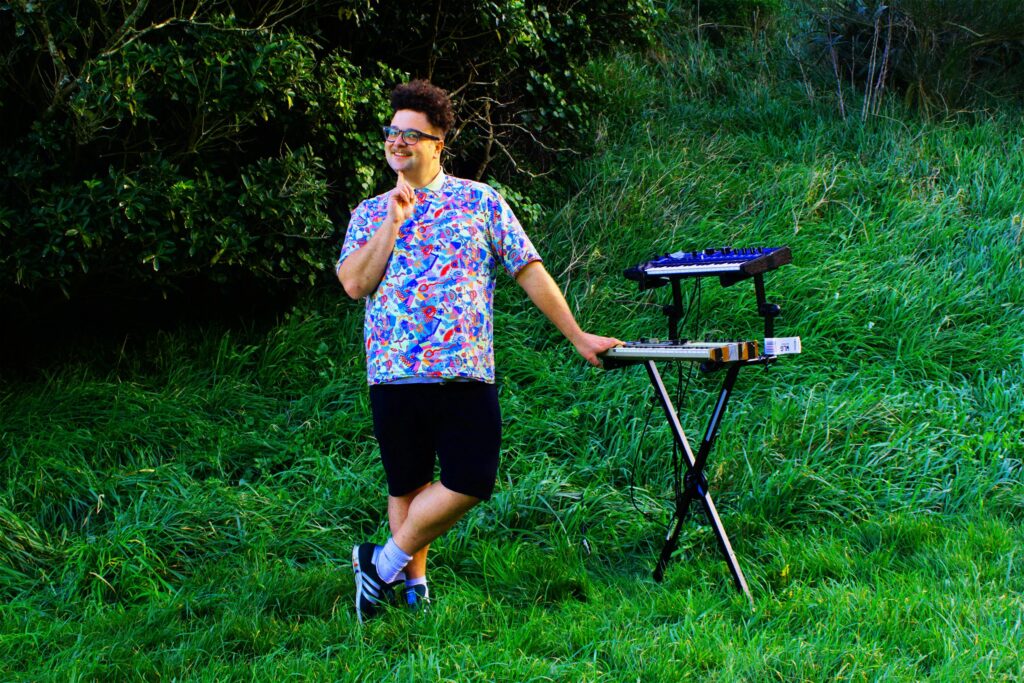
With filming underway for the Nobody Here documentary – he’s being interviewed for it – and given his involvement in the scene for the best part of a decade, it’s interesting to hear Eyeliner’s thoughts on Vaporwave’s cultural significance, and the simple fact that on the surface at least it appears to be as popular as ever.
“It’s incredible – Vaporwave pushes forward and back through time. It is simultaneously something old and something new – and not, for me, in a nostalgic way. I was there for the ‘90s growing up, so for me it’s more the way it works with the idea of a past and the idea of a future, and of time itself.
“Also, it’s a very effortlessly executed triumph of postmodern art – the means of producing it have low entry barriers, it speaks a lot about itself and the nature of media itself, it reuses existing signifiers in a new way (something borrowed).
“And as it is centrally an internet genre, there is a very formalised visual conversation happening alongside it (something blue (& purple)). So, I still find the whole thing super interesting and a whole lot of fun to play with.”
We’re talking just days after the Nobody Here team returned from filming at Electronicon 3 in New York; a show that was attended by thousands of fans.
Add to that the fact that Pitchfork are about to team up with 100% Electronica to put on a big event in London (with George Clanton and DDS playing) and the success of Yung Bae’s recent US tour, and it seems a good time to talk about Vaporwave’s relationship with the mainstream.
It’s a subject of some debate within the community and there’s no doubt that the scale of 100% Electronica’s ‘Summer Camp’ in Brooklyn brought those tensions to the surface again, on Twitter at least.
I ask how significant the potential for growth is, and whether it’s a good thing for a scene that has very firm roots in the underground.
“I wouldn’t even consider anything that has gone on – whether live or released – mainstream by any sense of the word. Just look at how astronomically huge someone like Drake is in comparison.
“I don’t live in fear of this music losing authenticity or anything like that. I’m still genuinely shook that it eclipsed Seapunk AND Chillwave.
“What I think of when I consider mainstreaming is more the posts on that Reddit Vaporwave aesthetics group; and half of it is really bad Star Wars shirts at Target and yet another Roman bust on a canned IPA. Those are probably the guys making all the money in this equation.
“But yeah, in terms of shows, festivals, music releases… more’s the better.
Nobody is worse off for putting out a record or having a good time. I was at Electronicon 2 and the vibes were so cute. It was so cute to see such a big bunch of shy dorks finally together.”
I dig a little deeper, because it has been claimed – with good reason – that Vaporwave is (or was) a subversive artform. And by extension, surely flirtation with the mainstream could undermine that? After all, wasn’t Vaporwave supposed to be anti-corporate, anti-capitalist? (I’m playing devil’s advocate at this point).
“Show me which specific flirtation is happening and I’ll make the call. I think we can at least start from a base observation that Vaporwave is anti-capital in the respect that most artists are broke, have precarious living situations and (me included) have worked so hard on these records and tours that they have made themselves sick and burnt out. It’s wild that it is an accepted reality of being a music producer.”
[Or indeed of any self-employed person, you could argue. But that’s a wider discussion…]
“There’s a track on LARP Of Luxury called New Zealand. On that record, my central idea was that every song title on the record is a “brand name” – at that time we had a Prime Minister who was a former Merrill Lynch executive who made himself Minister of Tourism and orchestrated a deepening housing crisis… He was a real piece of shit.
“That track is really sad and sarcastic for me as I was entering my thirties with no assets and increasingly precarious living/renting situations.
“I think the nominal experience of being an artist in any domain is inherently anti-capitalist. The tech world treats artists like the industrial world treats the environment – just an externality and a source of free value. I think critiquing an artist for charging for records and selling merch isn’t a gotcha of any kind. The idea that you are producing something people will pay for actually solidifies the nature of the artist as a worker.”
I ask him about his production techniques, not least because to the lay person there is a practical – and interesting – difference between working in midi and working with audio.
One of the more obvious parallels to draw with Vaporwave is with the punk movement: it’s low barrier of entry, anti-establishment ethos, and DIY distribution model. Just like the early punk bands, who only needed a guitar and three chords, a Vaporwave producer can get started (so they say) with a laptop, cracked DAW and an internet connection.
You’d think Eyeliner, with his background, might be a little over qualified.
“I put it all together with software on a high-speed gaming PC, and I build the music note-by-note in sequencing software. I build the music digitally from scratch which means I have a form of complete control. This also means that any nuance and anything sounding vaguely realistic or played by hand is all done intentionally. Or anything that sounds strongly robotic is done intentionally.
“I use software recreations of early-to-mid 90s instruments and I approach the preset sounds in these as a dimension of found sound. I’m pretty jaded about synthesizer programming – I’ve been using synths for nearly 25 years, so the use of presets is a little bit of a game that I play with myself. If I’m pastiching or referencing a genre or musical movement, I have to learn those rules and that is also part of that game for me.
“I like to make records that take the listener on a little journey which values their time. And I fold in a lot of little paradoxes and winks to keep it interesting. Music is so important to me and I take so much joy in making it that it is central for me that the listener hopefully feels that too.”
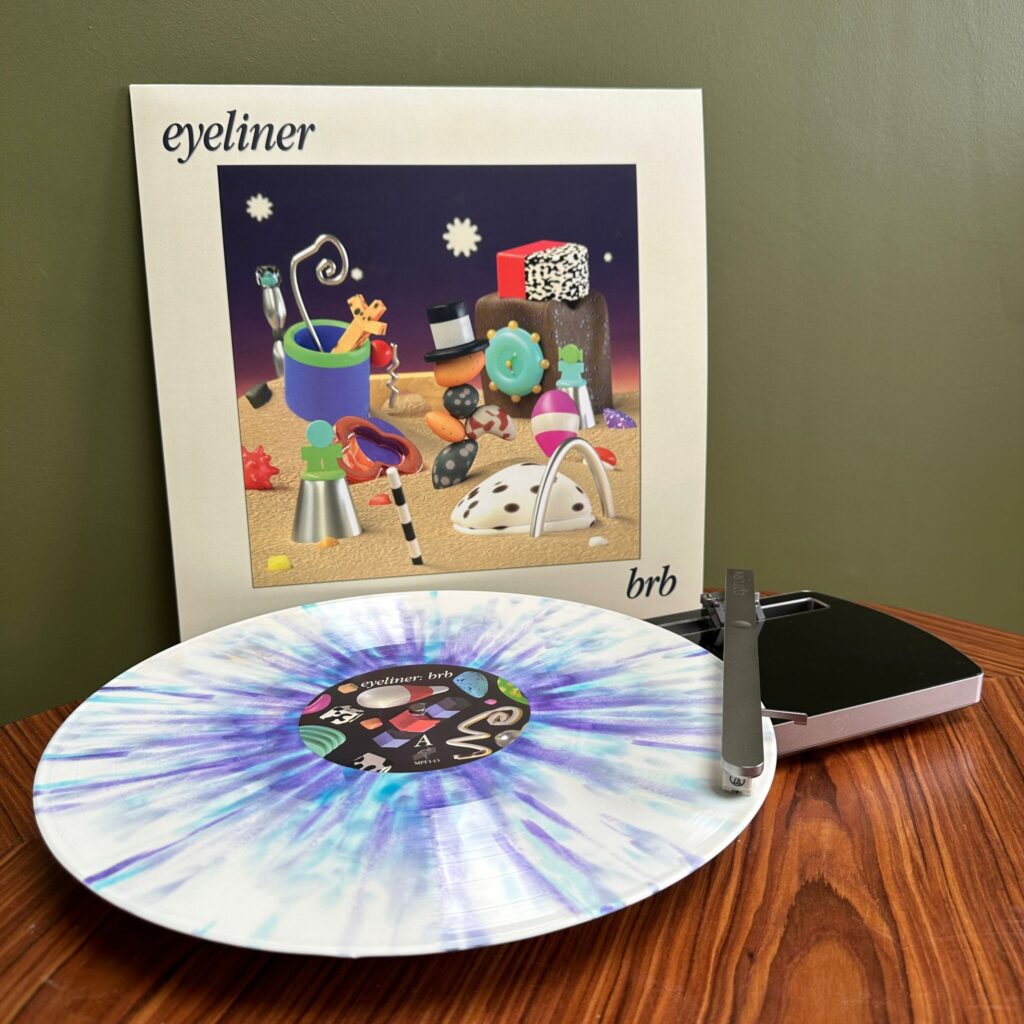
With the pandemic now starting to fade into recent memory, we are seeing a return to live events across the world. I ask him if there are any plans to perform live as Eyeliner again soon?
“I’m about to have my first kid and I don’t trust Aotearoa NZ’s heavily dumbass response to COVID, people are useless here with masking and coughing on each other, so I’m going to be woodshedding a bit here for sure. I don’t really feel like traveling locally.
“Having said that, a big part of the move to Hong Kong was being able to tour in Asia more, but with travel restrictions that got impossible pretty quickly. I am aching to play in Japan one day as there is so much music there that inspires me, from their experimental/noise scene to boogie/city pop and their contemporary dance music. Maybe once this kiddo of mine is out and about I’ll be able to get back to the US and Europe (especially via train) eventually!”
It’s perhaps the perfect place to end our chat, on a positive note. But it would be a waste not to ask Eyeliner for some tips on application…
“You can put it on while walking to work, in the office, even if you’re up late on an all-nighter. A few people have told me that they do that; just to focus.
“You could put it on when you’re driving, sipping a latte at the park, like pretty much anywhere. You could put it on to make friends. The rumours are so true, there is just a certain ‘je ne sais quoi’ about Eyeliner.”
‘brb’ is out on My Pet Flamingo on November 11th on digital, cassette and vinyl.
Written by Enzo Van Baelen
